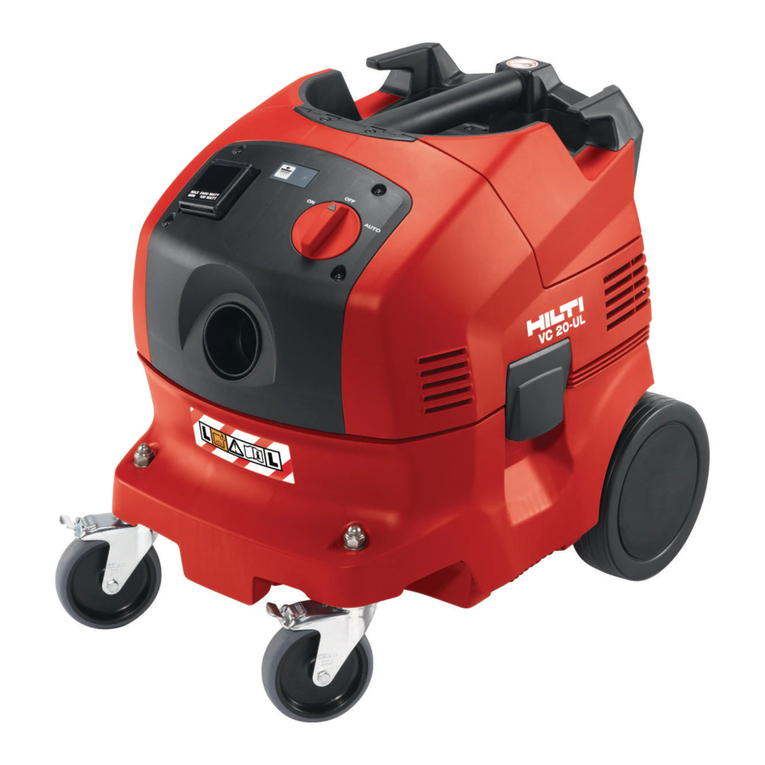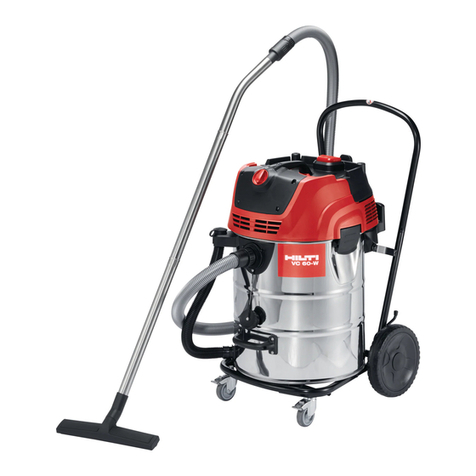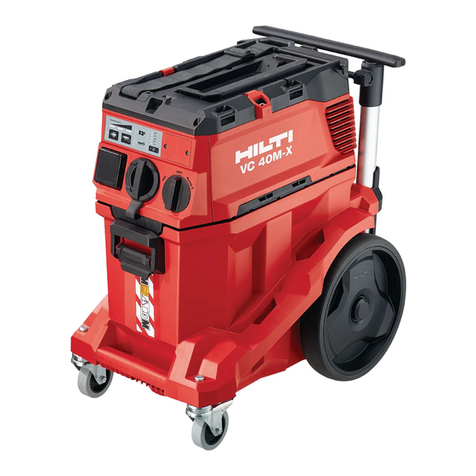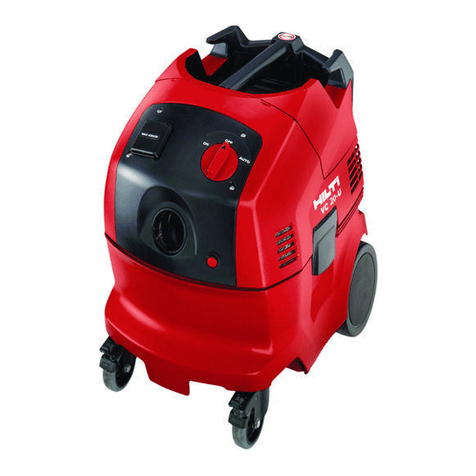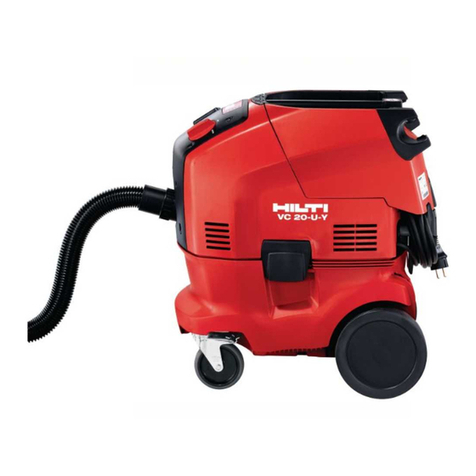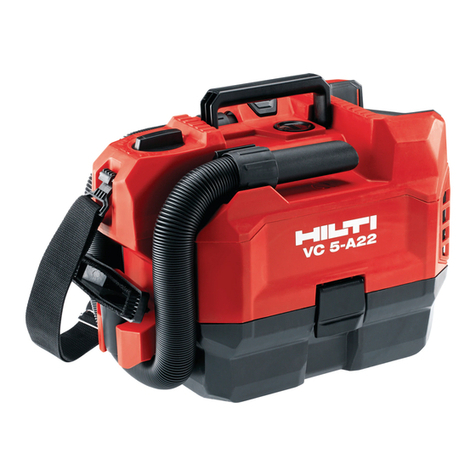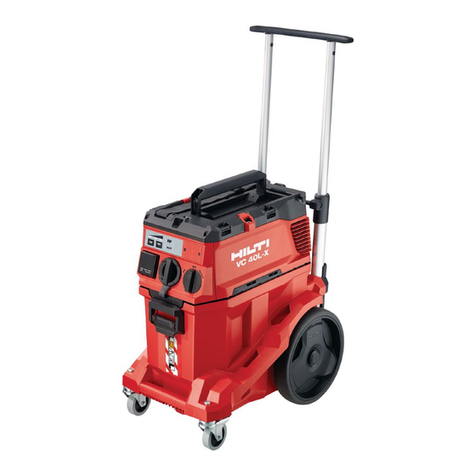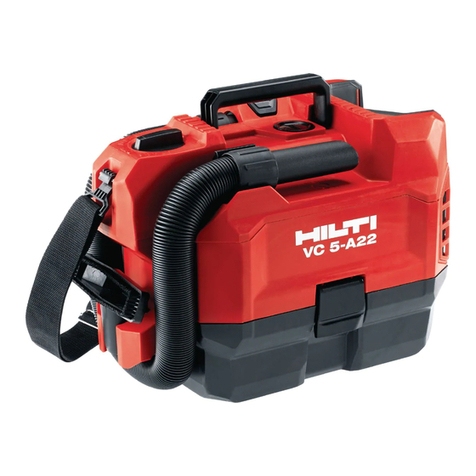
Appliance VC 20‑U/ VC 20‑UM VC 40‑U/ VC 40‑UM
Air temperature -10…+40°C -10…+40°C
Automatic filter cleaning approx.
every
15 s 15 s
Information about the appliance and its applications
Protection class Protection class I
Protection class IP X4 protection against sprayed water
Noise and vibration information (measured in accordance with EN 60335-2-69):
Typical A-weighted emission sound pressure level 71 dB (A)
Uncertainty for the given sound level 2.5 dB (A)
Triaxial vibration value (vibration vector sum) < 2.5 m/s²
Uncertainty (K) is taken into account in the vibration value
5 Safety instructions
5.1 Basic information concerning safety
a) In addition to the information relevant to safety
given in each of the sections of these operating
instructions, the following points must be strictly
observed at all times.
b) Read all instructions! Failure to follow all instruc-
tions listed below may result in electric shock, fire
and/or serious injury.
c) Before use of the appliance together with a power
tool, the operating instructions for the power tool
must be read carefully and all safety instructions
observed.
5.2 Requirements to be met by users
a) Stay alert, watch what you are doing and use
common sense when operating the appliance.
Do not use the appliance while tired or under
the influence of drugs, alcohol or medication. A
moment of inattention while operating appliances
may result in serious personal injury.
b) Dress properly. Do not wear loose clothing or
jewellery. Keep your hair, clothing and gloves
away from moving parts. Loose clothes, jewellery
or long hair can be caught in moving parts.
c) Use safety equipment. Always wear eye protec-
tion. Depending on the purpose for which the electric
appliance is to be used, wearing safety equipment
such as a dust mask, non-skid safety shoes, hard
hat, or hearing protection will reduce the risk of injury.
d) If devices are provided for the connection of dust
extraction and collection facilities, ensure these
are connected and properly used. Use of dust
collection can reduce dust-related hazards.
e) The machine is intended for professional use.
f) The machine may be operated, serviced and re-
paired only by authorized, trained personnel. This
personnel must be informed of any special haz-
ards that may be encountered.
g) Use extra care when cleaning on stairs.
h) Do not put any object into openings. Do not use
with any opening blocked; keep free of dust, lint,
hair, and anything that may reduce air flow.
5.3 Proper organization of the work area
a) Ensure that the workplace is well lit.
b) Ensure that the workplace is well ventilated. Ex-
posure to dust at a poorly ventilated workplace may
result in damage to the health.
c) Keep the workplace tidy. Objects which could
cause injury should be removed from the work-
ing area. Untidiness at the workplace can lead to
accidents.
d) Store appliances out of reach of children when not
n use. Do not allow persons unfamiliar with the
appliance or these instructions to operate it. Ap-
pliances are dangerous when used by inexperienced
persons or persons with limited physical, sensory or
mental abilities.
e) Keep children and other persons away from the
area while the appliance is in use. Distractions can
cause you to lose control.
f) Do not operate the appliance in explosive atmo-
spheres, such as in the presence of flammable
liquids, gases or dust. Electric appliances cause
sparks which may ignite the dust or fumes.
g) Do not allow other persons to touch the appliance
or the extension cord.
h) Avoid unusual body positions. Make sure you
work from a safe stance and stay in balance at all
times.
i) Wear non-skid shoes.
j) Always lead the supply cord, the extension cord
and the suction hose away to the rear when work-
ing. This will help to prevent tripping while working.
k) After finishing the work, always tidy up and stow
the supply cord, extension cord and suction hose
away securely. This will reduce the risk of tripping
and falling.
en
21
Printed: 11.12.2014 | Doc-Nr: PUB / 5128810 / 000 / 05





